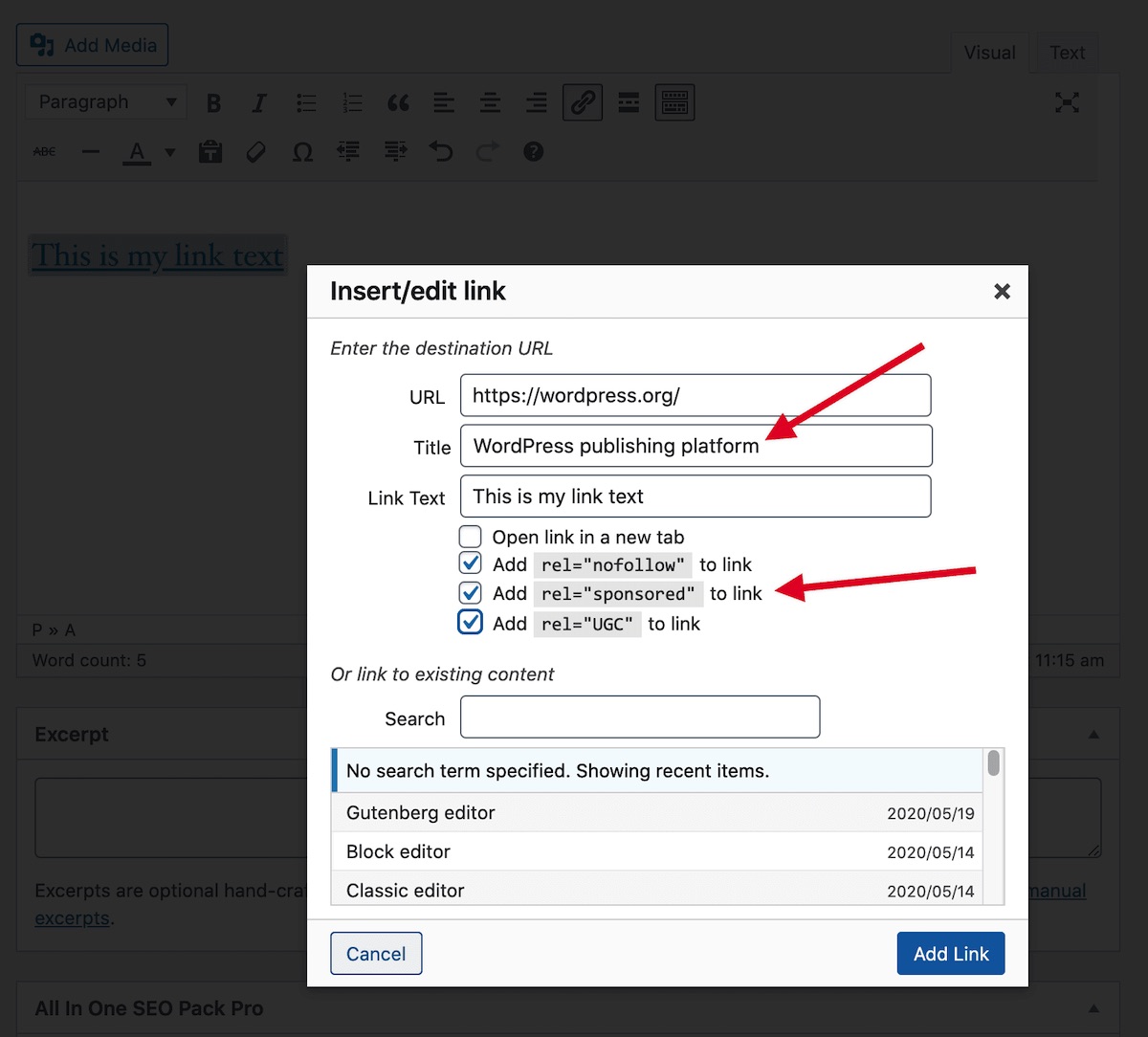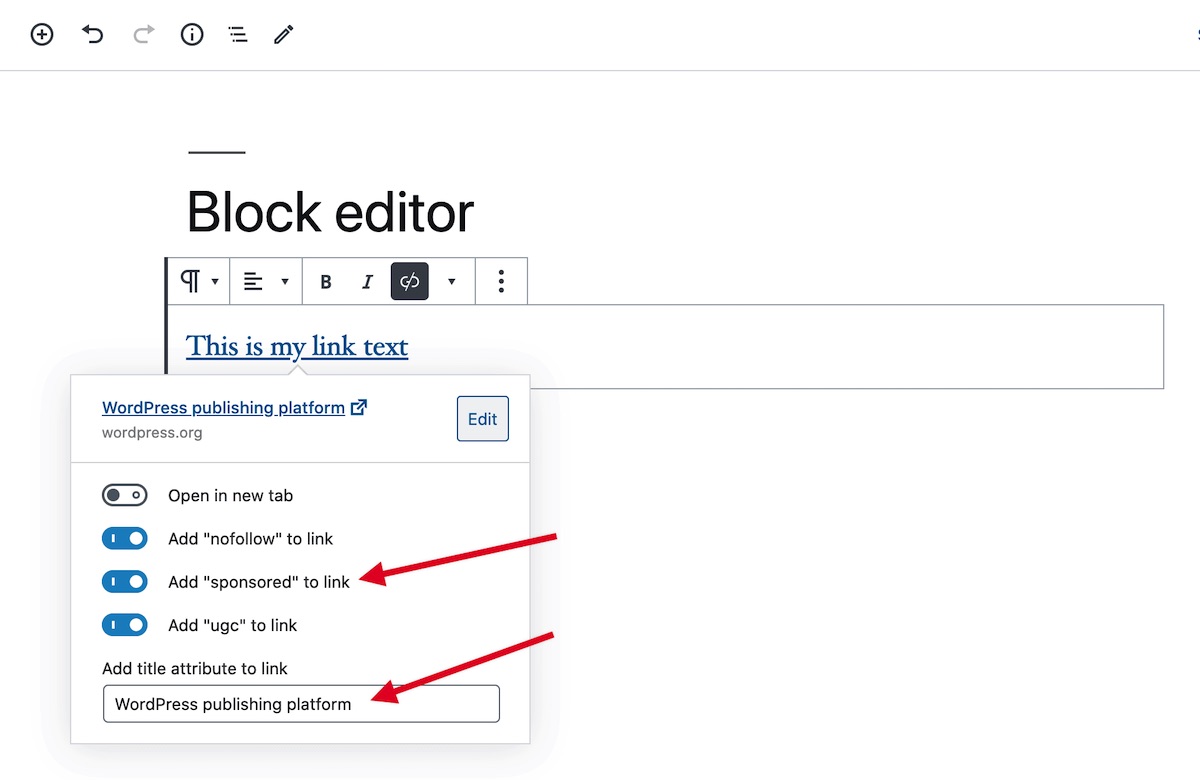Notice: There is no legacy documentation available for this item, so you are seeing the current documentation.
All in One SEO enables you to control important information about your internal and external links in your content, that will help with your SEO. These include:
- The link title attribute
- The nofollow attribute
- The sponsored attribute
- The UGC attribute
See below for a description of what each of the above attributes are used for.
In This Article
Here’s how to control these:
Controlling Links in the Classic Editor
Select your text and click the Insert Link button in the button bar as you would normally. Click the Link Options icon shown below:

You’ll see the Title field and you’ll see checkboxes for Add rel=”nofollow” to link, Add rel=”sponsored” to link and Add rel=”UGC” to link as shown below:

Controlling Links in the Block Editor
Select your text and click the Add Link button as you would normally. Click the Link Settings down arrow and you’ll see toggles for Add “nofollow” to link and Add “sponsored” to link as shown below:

When to Use These Attributes
The value of these to your onsite SEO is explained below:
- The title attribute tells search engines about the content you’re linking to. You should use it to provide a brief description of where you’re linking to. Don’t stuff this with keywords. This has a negligible value in modern SEO
- The nofollow attribute tells search engines not to follow the link. You’d use this mainly for external links where the external content provides no benefit in SEO value to your site. Each time you link to an external site, you give them a little of your SEO value
- The sponsored attribute should be used for links that were created as part of advertisements, sponsorships or other compensation agreements. You’d use this mainly for external links
- The UGC attribute is used for User Generated Content where visitors post content on your site with links (for example, forum posts or comments)
For more information on when and why you’d use these attributes, see this article from Google’s Webmaster Central Blog.